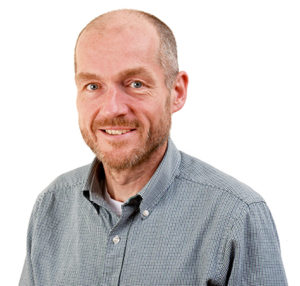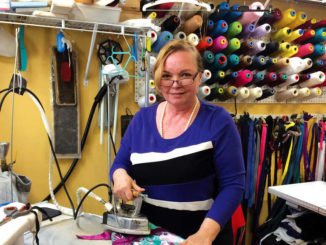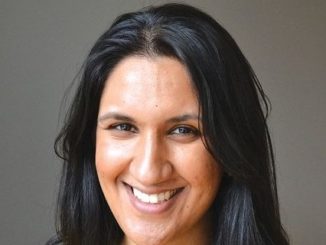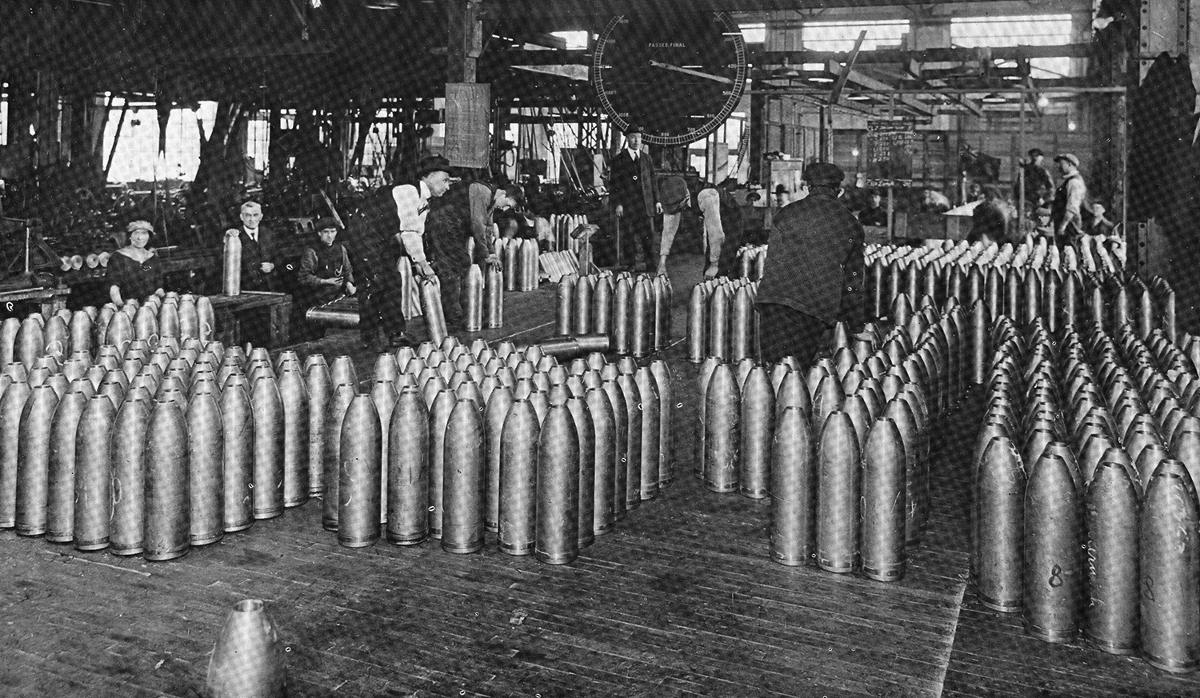
Harry and Ruth Goldhar are retiring from the community newspaper business, for a second time.
After five successful years of operation, the founders of Leaside Life have sold it to new owners.
And that means, now that he has given up the editorial reins, Harry, who has always preferred to remain in the background, can no longer do anything to prevent this paper from paying a richly-deserved and somewhat delayed tribute to two dedicated community builders, mutually supportive and complementary business partners, and all-round great people.
They certainly have interesting life stories, highlighted by a happy marriage of 52 years and counting.
Ruth’s father had been a well-known Jewish socialist in Austria at the time of the Nazi annexation in 1938. Her parents fled soon after, via France, to Mexico, for which they had obtained a visa, while her mother’s sister received a visa for Argentina. “Our families have kept in touch, amazingly,” says Ruth, who was born a few years later in Mexico.
“My father got a job teaching at the University of Pittsburgh, but then he was kicked out of the United States because, so my mother claimed, he was suspected of being a Communist – it was the McCarthy era. We travelled a lot, and I went to 12 different schools. Even when we came to Canada – he had a cousin here – we lived in Winnipeg and Montreal before settling in Toronto when I was about 11.”
But wasn’t it difficult to have to move so often? “My father always laughed that I was able to make friends on day two at a new school – you adjust as a child. But I still remember having to leave friends behind. I guess that’s why the people and friends I’ve hung on to have been so important to me.”
Harry grew up in Toronto and attended Harbord Collegiate. He also got involved with Habonim, an international Zionist youth movement, mostly, he says, because their building was next door to his home near Cecil and Ross Sts., just south of the U of T campus.
He became friends with Leo Shimerl through Habonim, and for several years the two of them worked at its summer camp, Camp Kvutza, on Lake Erie near the mouth of the Grand River. One summer Leo worked for two weeks without taking a salary so his younger sister could afford to attend as a camper. Her name was Ruth.
Harry studied journalism at Ryerson and, when he graduated in 1955, “my only ambition in life was to bum around the world.” For the next few years he travelled and worked for newspapers in Montevideo, Buenos Aires, and in Hong Kong. He kept in touch with the Shimerls and, when he returned to Toronto, he and Ruth, who, in the meantime, had graduated high school and earned her teaching certificate, decided to visit Leo, living in Montreal. “We started dating and were married within a year.” That was 1965.
Settling back in Toronto, Harry got a job with the Don Mills Mirror. “It was a quality paper,” he says, “with free delivery.” But it was small and, within a couple of years, Harry was let go.
But he quickly found another job, first part-time, then full-time, at the Toronto Star, where he remained from the late 1960s until the mid ’70s. Daughters Kathleen and Caroline were born in 1970 and 1973, respectively.
Birth of the Town Crier
“But Harry wasn’t happy,” says Ruth. “One day he said, ‘they’re in bed when I leave, they’re in bed when I come home – this is no life.’ I said ‘go ahead – quit,’ and he quit! We took the two little girls to South America. We spent some time in Argentina, Uruguay, Chile and Brazil. I taught a bit to earn some money. But after a year we had holes in our shoes – and so we came home.”
Harry’s take on the year away? “This was my mid-life crisis – I ran away from home but, being stupid, took my family with me.”
Through a former colleague Harry landed a job teaching journalism part-time at Western and commuted back and forth to London for two or three days a week for the next few years.
It was during this time that the Town Crier was born. “We were living in Crescent Town,” says daughter Kathleen Goldhar. “Changes to that community were underway and there were concerns about the [condo] board of directors. Lots of people wanted to know what was going on, but there was no way to get the information out. My father told my mom that, if she sold enough ads, he’d be able to put a small community paper together. She did. And then he did. And my sister and I, along with some of our friends, delivered those papers door to door.”
“We knew everyone in Crescent Town,” says Ruth, “and I knew all the shops, so selling the ads wasn’t hard. That first paper went to 3,000 apartments.”
“And it was called the Crescent Town Crier,” adds Harry. “I liked the name.”
“The paper began in my parents’ bedroom,” Kathleen continues. “From the beginning it was a family business with strong editorial ideals and a promise to offer good, local news to the community.”
Soon Harry was invited to start a similar paper in North Toronto. Others followed in Forest Hill, Leaside, York Mills-Bayview and the Annex, all under the Town Crier masthead. They rented office space on Bayview Ave. in Leaside to accommodate the growing business and, in 1984, bought their home on Donegall Dr. within easy walking distance, “so the kids could be part of it – that’s how Kathleen got her start in journalism.”
“For more than 20 years my parents worked together every day,” says Kathleen. “My sister and I felt at home at the office and we all became members of the Leaside community.
Why was the Town Crier so successful? “It was strictly local – that’s what people wanted,” says Harry. “And Harry and I were a team,” says Ruth. “We worked well together. That’s what made it work.”
Daughter Kathleen agrees that both parents were the key. “It was my dad’s strong sense of what makes a good story and how best to tell it,” she says, “that made every edition engaging and interesting. But that cannot overshadow my mother’s uncanny ability to sell ads. There is no store too big or no situation too intimidating for my mother. Every success, including their financial success, is thanks to my mother’s entrepreneurial abilities.”
Eventually Harry and Ruth decided it was time to move on. “The pressure of putting out five or six separate papers each month became too much. It was a big business and overwhelming.” They sold the Town Crier in 1996.
Ruth had just completed 17 years as a school trustee and had decided not to run again when East York was amalgamated with Toronto. For a few years Ruth sold real estate while Harry dabbled in book publishing.
By 2011 or so both Goldhars thought it might be time to start up another local paper in Leaside. “It had been a while,” says Harry, “and I didn’t think it would be that hard, although we wondered if it would work. From the beginning we thought of it as a community project. We were fortunate to get people who were willing to write for it – Alan Redway, Lorna Krawchuk, Michael Bliss, the councillors and LPOA reps and others. The idea was not only to present news but to present different opinions from the community.”

The first edition of Leaside Life came out in December 2011. Once again Harry was the editor and Ruth sold the ads. “People seemed to be ready for this,” suggests Ruth, “because the advertisers hopped on right away.”
Five years on, Harry, now aged 82, and Ruth decided to retire once again. “We were so happy to find two new owners with such a strong sense of community,” they agree. “As soon as we started talking with Stan [Flemming] and Jeff [Hohner], we were comfortable with them. We knew from day one that they were committed to keeping the paper focused on telling Leaside stories.”
Harry stepped down as editor in August 2016 and Ruth continued as director of advertising until the end of December. What’s next for the Goldhars as they begin their second “retirement”? For one thing, their 2017 travel itinerary includes Cuba and South America. In addition, “I started ukulele lessons in January,” Ruth laughs. “I’m volunteering at Holland Bloorview with kids in the classroom, and I’ve joined a book club.” As for Harry, “I’m just taking it easy – reading a lot, entertaining a lot and enjoying life. Who knows what’s next? But I’m not likely to start another paper again.”
On a personal note, the first few pieces I submitted to Leaside Life were written on behalf of the Arena Expansion Committee to promote the building of the new rink. I’m grateful that Harry soon invited me to write about other things going on in the community, and that he was patient when I (usually) missed the official deadlines. I learned a lot from his editorial changes, which he always took the time to explain. I have very much enjoyed getting to know Harry and Ruth over the past five years – two wonderful people I can now count as friends. Thank you!





